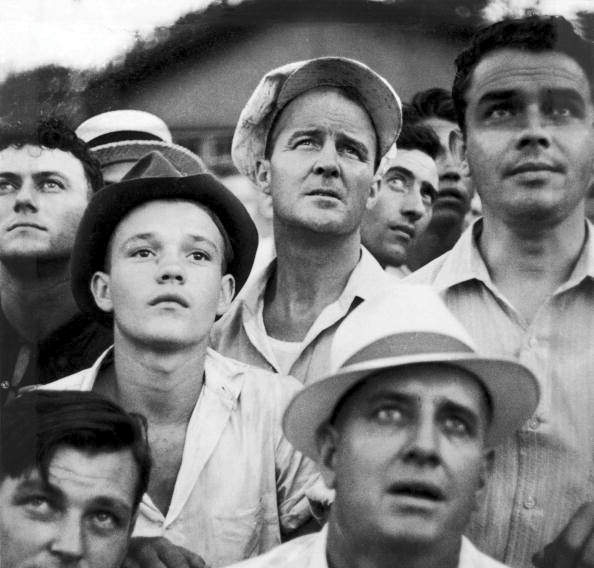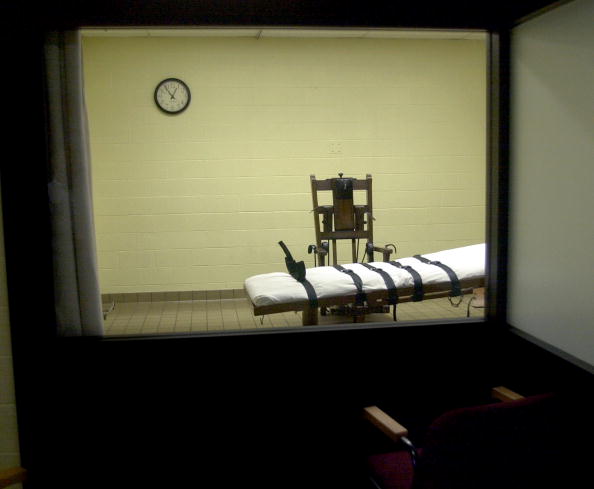The first instance of capital punishment on record in America was the shooting in colonial Virginia of George Kendall, accused of plotting to betray the British to the Spanish. If he had any parting quips, they were not written down. We have to wait for the execution of two Quakers, Marmaduke Stevenson and William Robinson, fifty years later, on October 27, 1659, for an account of the last words of the condemned. As one would expect, the two men, who were convicted and hung for disobeying banishment from the Massachusetts Bay Colony, reaffirmed their faith in God and reminded the spectators to mind the light that shone within them. Since then, as Last Words of the Executed, an enthralling book by Robert K. Elder, amply documents, there have been over sixteen thousand executions in this country and a vast record of final pronouncements taken from prison records, eyewitness statements, newspaper accounts, period diaries and written statements. Some of these are credibly attributable to the executed while others are of questionable origin or indisputably redacted.
Why this enormous interest in the final thoughts of men and women who were often guilty of committing horrific crimes? It must be the same morbid curiosity that brought huge crowds of Americans to public executions in the seventeenth, eighteenth, and nineteenth centuries. Many considered these grim occasions so much fun they brought their families along. The spectators didn’t mind if the hanging they were watching was botched and the condemned struggled choking for a long while at the end of the rope, or if his body dropped headless to the ground, and greeted such horrors with “rude jests” and “rabid laughter.” They expected, as part of the program, to hear a public admission of guilt, expression of remorse, appeal for forgiveness from God and the assembled, and a warning about the evils of booze and company of loose women. They were rarely disappointed.
“Don’t let it end like this. Tell them I said something,” Mexican revolutionary Pancho Villa worried in his dying moments. It is universally believed that if you care to be remembered by posterity, you better have something memorable to say in your last moments on earth. “I only regret that I have but one life to lose for my country,” Nathan Hale, an American spy convicted of espionage by the British in 1776 famously said. History books of every country are full of such heroic examples; most of them, including this one by Hale, of doubtful veracity. What makes this book different is that people we encounter in its pages are almost exclusively unknown and forgotten. Their final thoughts can be touching, angry, funny, and, at times, unforgettable and original. Here are a few examples:
—“What time is it? I wish you’d hurry up, I want to get to hell in time for dinner.” (John Owens (AKA Bill Booth), executed for murder in Wyoming on March 5, 1886).
—“I would rather be standing here for the crime that so help me God, I never remember committing, than to be sitting down there eagerly waiting to see a man die.” (Edward J. Brislane, executed in Illinois for murder on February 11, 1921).
—“Don’t worry about me. I’m okay. They are not shooting me for deserting the United States Army—thousands of guys have done that. They’re shooting me for bread I stole when I was 12 years old.” (Edward Donald “Eddie” Slovik,” convicted of desertion in northeastern France and executed on January 31, 1945.)
—“When I die, bury me deep, lay two speakers at my feet, put some headphones on my head and rock and roll me when I’m dead.” (Douglas Roberts, convicted of kidnapping, robbery and murder in Texas and executed on April 20, 2005.)
Most of the condemned, one discovers, humbly comply with the proceedings and are eager to thank and forgive their guards and even their executioners. A few rage and spew obscenities. The manner in which they are put to death matters a lot. Elder has separate sections in his book for execution by hanging, the firing squad, the electric chair, the gas chamber and lethal injection. Hanging, which was the method used until Edison invented electricity and his company helped in constructing the first electric chair, rarely worked smoothly. The record on the other methods is marginally better, though it took two hours and ten needle sticks before the proper vein was found and Ohio executed a convicted murderer in May of 2007. Moreover, there have been claims, as The New York Times put it at the time, “that lethal injection, predictably and with some regularity, goes wrong: that a paralyzing drug can leave an inadequately anesthetized inmate with the ability to feel severe pain as another drug stops the heart, but without the ability to move or call for help.”
Advertisement
Death by the firing squad seems to elicit more spontaneous and believable last words since one had the option of refusing a blindfold and facing one’s executioners as they pointed their rifles. (Though relatively rare nowadays, this method was used just a few weeks ago in the execution of a double murderer in Utah. The condemned, in this instance, said he did not have any final words before he was hooded and shot.) In the days when the authorities allowed the condemned to smoke cigars to the very last moment and even have a shot of whiskey, there was bravado even at hangings. The more technical and private the executions became, the less opportunity there was to die like a free spirit. When asked where he wanted to be buried, Charles Birger, convicted murderer executed in Illinois on April 19, 1928, joked: “A Catholic cemetery because that’s the last place the devil would look for a Jew.”
Often more interesting than the final thoughts of some of these men and women are the short descriptions Elder provides of their backgrounds and the crimes they committed. Over the years, a few of them became the basis of novels and films, but there are plenty of others in the book that are just as tantalizing. Most likely, some of the executed were innocent, while others, who were guilty, had complicated and awful lives; one tends to feel sorry for them and wishes to know more about their stories. It’s when it comes to true monsters, and there are plenty of them here, that even someone like me, who opposes capital punishment, begins to wonder if there ought to be an exception now and then. Take the case of Ted Bundy who killed at least thirty women, and of other serial killers. Whatever side in the argument one habitually takes, this book is recommended reading, so that in addition to learning how we put people to death, one can also put to the test the firmness of one’s convictions.
Robert K. Elder’s Last Words of the Executed, with a foreword by the late Studs Terkel, has just been published by the University of Chicago Press.



